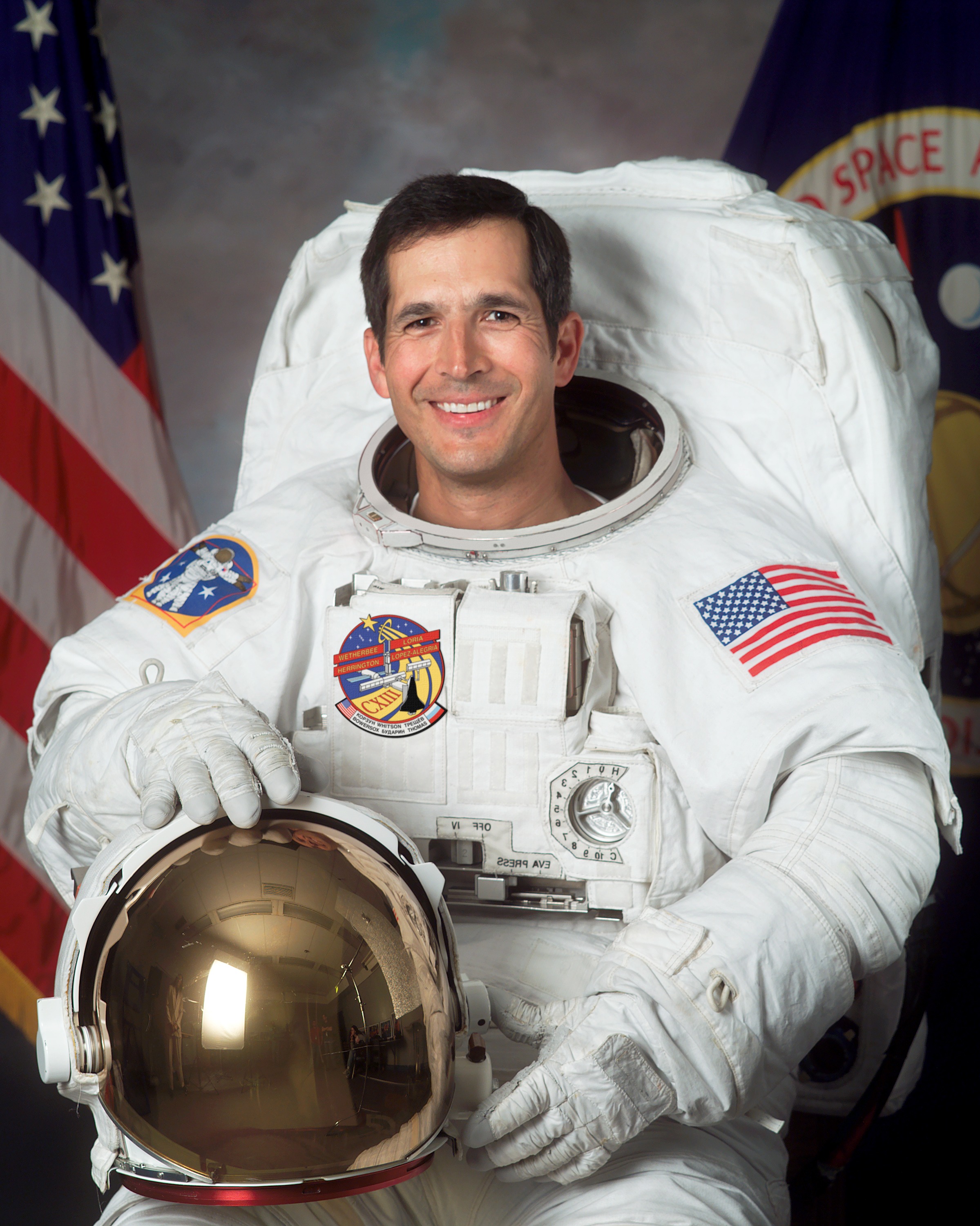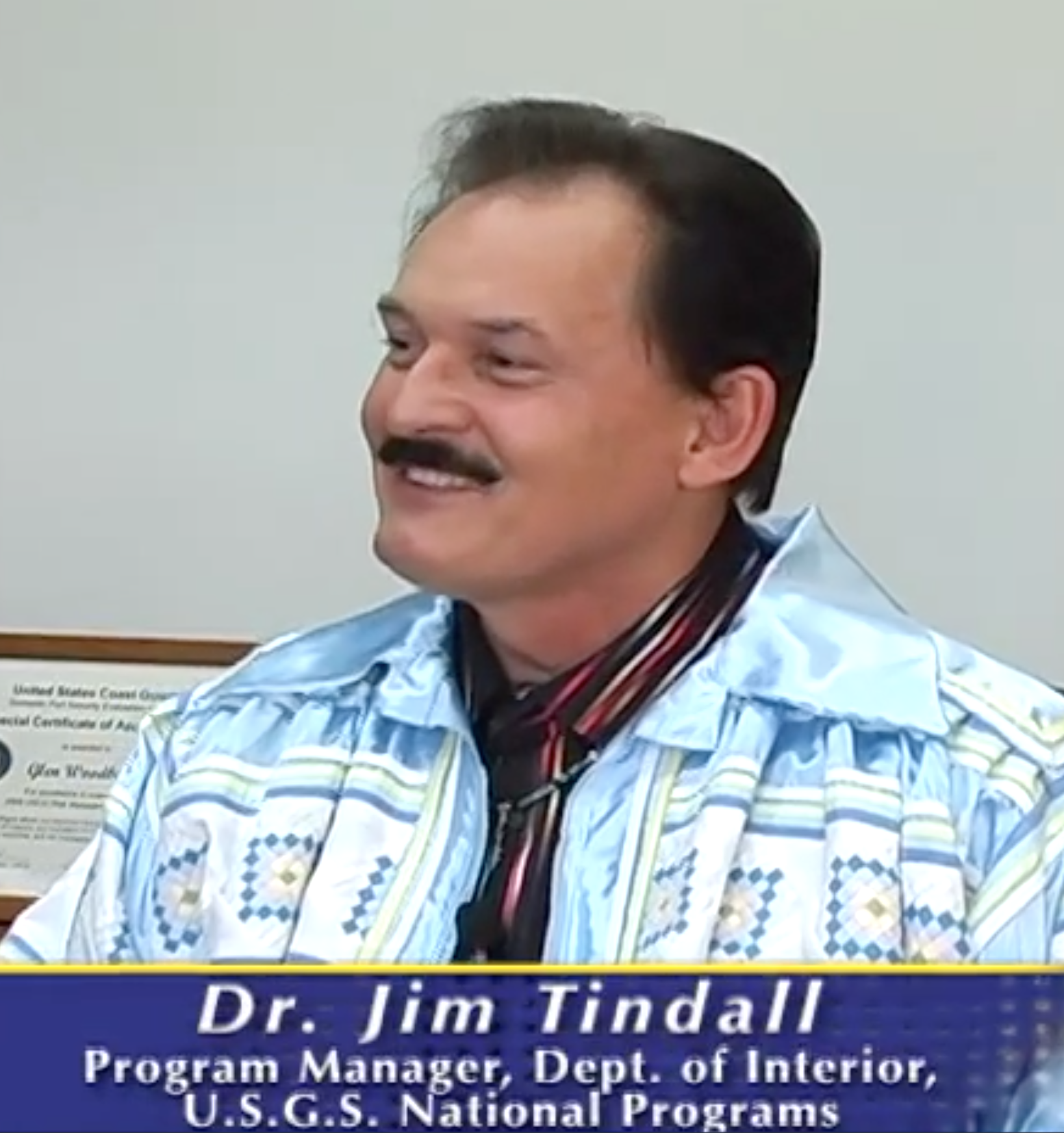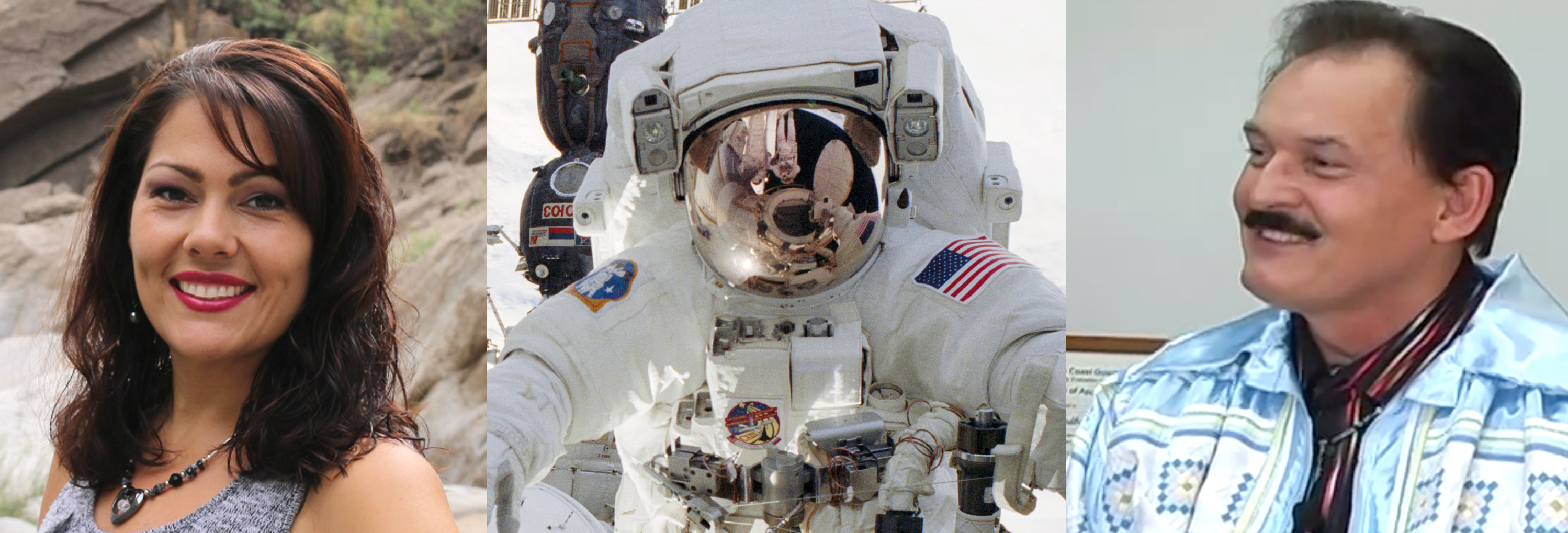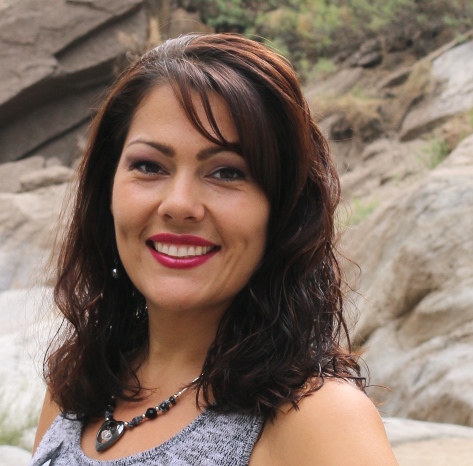Native American Heritage Month - Dudley Knox Library
This observance commemorates the history, heritage, and culture of Native Americans and Alaskan Natives. NPS and Dudley Knox Library join the nation in recognizing Native American students at NPS and their accomplishments.
Former Astronaut Recounts How He Reached for the Stars at American Indian Heritage Month Event
An 8-year-old boy built a rocket ship out of a cardboard box, dreaming he could fly to the moon.

That boy was Dr. John Herrington [NPS Alumnus, 1995], who grew up to become the first American Indian (Chickasaw tribe) NASA astronaut, flying to space with STS-113 Endeavor in 2002. Herrington, a retired Navy commander and graduate of the Naval Test Pilot School (TPS) at NAVAIR, shared his story at NAVAIR’s national virtual American Indian Alaskan Native Heritage Month.
“My ancestors — my parents, my grandparents — were able to make decisions that allowed them to survive,” he said. “My heritage, based on making good decisions, allowed me to do what I’ve done. It’s influenced my life greatly. My ancestors have given me the opportunity to walk the earth and fly above it.”
Read Dr. Herrington's thesis here: Uniform framework for GPS/IMU integration using Kalman filtering
Source: NAVAIR News 11 Nov 20
Photo: NASA, via Wikipedia
 James Tindall
James Tindall
Dr. James Tindall [NPS Alumnus, 2006], who is Cherokee/Seminole, is an alumnus of CHDS. Tindall's thesis work proposed that the federal government and the sovereign Tribal Nations of America need to make a sincere effort to communicate and cooperate with one another to help solve the many homeland security challenges facing them. Dr. Tindall continues to speak publicly on bettering Tribal Nation integration into National preparedness, beginning with his time at NPS, when his fellow students expressed an interest in learning more about homeland security issues facing tribal governments. See his talk, "Improving Tribal Relations in Homeland Security". Read his thesis here.
Margaret Muhr
NPS Center for Homeland Defense and Security master’s degree graduate Margaret Muhr, an enrolled member of the Potawatomi Nation, was the first Native American to graduate from CHDS’ master’s degree program. Muhr’s CHDS thesis, “What is the Problem to Which the Answer Was Public Law 83-280: How is it Working Out and What Should We Do Next?,” explored that Act’s shortcomings from a tribal perspective. Read more about Margaret Muhr.
NPS Research looks at ...
Homeland Security from a Tribal Context: A gap exists between the federal government and the 567 tribal nations, which hampers tribal inclusion in homeland security. American Indian and Alaskan Native lands comprise 100 million acres of land within the territory of the United States, with 250 miles of borderlands—potentially a formidable rift in the nation’s homeland security. (thesis by Lisa M. Figueroa)
What is the Problem to Which the Answer Was Public Law 83-280: How is it Working Out and What Should We Do Next?, explored that Act’s shortcomings from a tribal perspective. The author, Margaret Muhr, an enrolled member of the Potawatomi Nation, was the first Native American to graduate from CHDS’ master’s degree program. (thesis by Margaret Muhr)
Bettering Tribal Nation integration into National Preparedness (video): There remains a gap between DHS and the 576 Tribal Nations in coordination efforts in Homeland Security emergency response and rescue efforts. Policies have been developed and implemented without the consultation of both parties. The federal government and the sovereign Tribal Nations of America need to make a sincere effort to communicate and cooperate with one another to help solve the many homeland security challenges facing them today.
Improving Tribal Relations in Homeland Security (panel discussion video): NPS research explores tribal relations with federal and state entities regarding homeland security, bringing up issues such as tribal sovereignty, training, funding, and border jurisdiction.
Books of interest
Bixler, Margaret T. Winds of Freedom: The Story of the Navajo Code Talkers of World War II. Darien, CT: Two Bytes Pub. Co., 1992.
Carroll, Al. Medicine Bags and Dog Tags: American Indian Veterans from Colonial Times to the Second Iraq War. Lincoln, NE: University of Nebraska Press, 2008.
Durrett, Deanne. Unsung Heroes of World War II: The Story of the Navajo Code Talkers. New York, NY: Facts on File, 1998.
Echohawk, Brummett, Mark R. Ellenbarger, Trent Riley, and Ernest Childers. Drawing Fire: A Pawnee, Artist, and Thunderbird in World War II. Lawrence, KS: University Press of Kansas, 2019.
Franco, Jere Bishop. Crossing the Pond the Native American Effort in World War II. Denton, TX: University of North Texas Press, 1999.
McClain, S. Navajo Weapon: The Navajo Code Talkers. Tucson, AZ: Rio Nuevo Publishers, 2001.
Riseman, Noah. Defending Whose Country?: Indigenous Soldiers in the Pacific War. Lincoln, NE: University of Nebraska Press, 2012.
Robinson, Gary, and Phil. Lucas. From Warriors to Soldiers: The History of the Native American Service in the United States Military. New York: iUniverse, Inc., 2008.
Sheffield, R. Scott. The Red Man’s on the Warpath the Image of the “Indian” and the Second World War. Vancouver: UBC Press, 2004.


